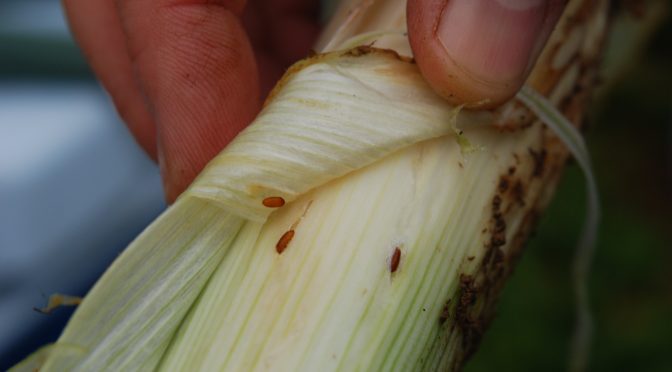Allium leaf miner (Phytomyza gymnostoma) an invasive pest of European origin, has recently been identified in several US states including Pennsylvania (2015), New Jersey (2016), New York (2017), and Maryland (2017), representing the first records in the Western Hemisphere. The allium leaf miner (ALM) was first described in Poland in 1858, with subsequent finds in other European countries, but it has only emerged as a significant pest since the late twentieth century. The reasons for the change in pest status are unknown. The US has apparently de-regulated allium leaf miner.

Allium leaf miner is an insect pest similar to leek moth, as it causes a substantial amount of damage to Allium crops at the larval stage. Larvae mine into the leaves, stalks, and / or bulbs of leeks, onions (dry bulb, green), garlic, shallots and chives. As they grow, larvae move towards the bulb and sheath leaves, where they often pupate. The galleries in the tissue leave the plant susceptible to infection by fungi and bacteria. Symptoms of feeding injury vary depending on the host plant and its stage of development. Very high rates of injury, including up to 100% crop loss, have been reported.

Larvae are cream to yellowish in color, up to 8 mm in length, legless, and lack a distinct head capsule. They have two elongated lobes or projections at one end, which can help to distinguish them from onion maggot larvae. ALM larvae are easily distinguished from leek moth larvae which have legs, a defined head, and are yellow to greenish in color, with small spots on each abdominal section.

The adult is a very small, 3mm-long, grey to black fly with a yellow head (Figure 1). They are smaller than similar flies that infest onion, such as the onion maggot. Females create punctures during egg laying, and both males and females can be observed feeding on the plant exudates seeping from these wounds. Spots look superficially like thrips injury, but are larger and follow a distinct line. (Figure 2). Larvae and pupae can be found by pulling apart leaves as seen in Figure 3. The pest has been found to have two generations per year, with activity in the spring and again in the fall (summer aestivation or inactivity). The ALM overwinters as a pupa attached to plant tissue or in the adjacent soil.
In Europe, ALM is managed conventionally with insecticides that are labelled for leafminers or dipteran leafminers. Chemical treatment is difficult as the larval stage of ALM can be deep inside the plant. Yellow sticky traps used for onion maggot flies can be used to monitor adults. Floating row covers used for leek moth exclusion will also be effective if the plants are covered before spring emergence. Delayed planting may help to reduce injury to spring crops.

Ontario Allium growers should be on the lookout for any insect damage that looks unfamiliar. Look for distorted, stunted plants with lines of discoloured light spots or mines on leaves. Pull apart leaves of suspect plants and look for larvae or 3.5 mm oval pupae, as seen in Figure 3 & 4.
The ALM has been placed on the list of regulated pests by the Canadian Food Inspection Agency, which has implications to the movement of affected plant material from infested areas. To date, this pest has not been identified in any Canadian province, although its presence in neighboring US states and the potential for entry through imports are of concern. For more information, contact Travis Cranmer at travis.cranmer@ontario.ca or (519) 826-4963.
Article written by Hannah Fraser, entomologist for horticulture, Cora Loucks, plant health and surveillance coordinator and Travis Cranmer, vegetable crops specialist.

0 comments on “New Allium Pest of Concern – Allium leaf miner”